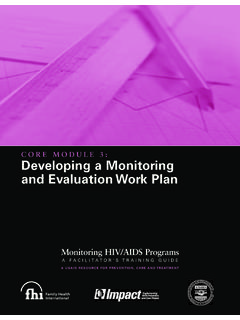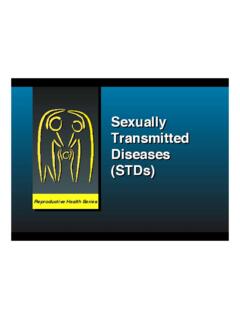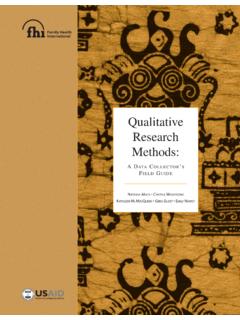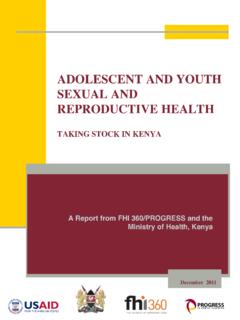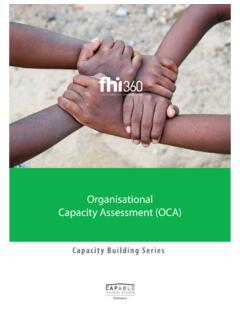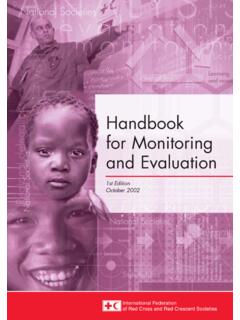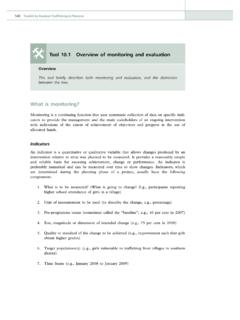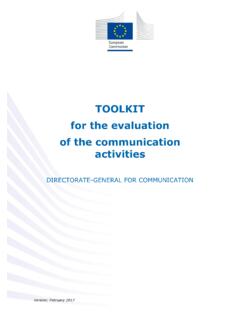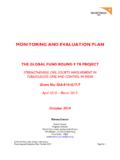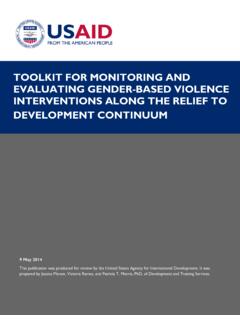Transcription of Design a Monitoring and Evaluation System
1 25 Stakeholder Engagement Toolkit for HIV Prevention Trials3 Design a Monitoring and Evaluation System2526 Stakeholder Engagement Toolkit for HIV Prevention TrialsIntroductionIn Step Two, your team (and others relevant to your work) made a commitment to the principles of stakeholder engagement. Once you have a plan and the commitment, the real work begins!Your efforts should be based on the answer to this question: What do we want to accomplish by engaging stakeholders? In Step One, your team thought about concrete objectives for your work with the stakeholders in light of your trial and the broader research agenda. Now that you have defined the goals of stakeholder engagement, you can establish a framework for determining whether your efforts are effective and worth the time and resources involved.
2 Monitoring and Evaluation (M&E) of stakeholder engagement activities can be especially challenging. The successful engagement of a stakeholder may be neither concrete nor definable. And it may be a result of various initiatives or activities some of which may not even be linked to stakeholder engagement efforts. For instance, success is sometimes defined as support for the conduct of a given trial, but support may be indicated by a lack of negative media coverage or the absence of civil society controversy. The quick enrollment of participants in a trial may be a result of effective community engagement and a broad understanding of the trial in the community which are stakeholder engagement efforts but it also may be a result of efficient recruitment practices by the clinical team.
3 Developing a meaningful M&E mechanism can help resolve some of these overarching goals and the resulting objectives should have formed the basis of the stakeholder engagement plan (including a work plan and action plan) developed in Step One. The activities included in your plan should reflect a set of key objectives and should be linked to short-term and long-term goals. Your team will need to think about all of these factors goals, objectives and activities and define measurable indicators of progress at given times. Indicators may be qualitative or quantitative, and they may be focused on process or impact, depending on the goals you have identified.
4 (See Task 3 in this section for an explanation of process indicators and impact indicators.) You will also need to consider whether your M&E mechanism will be participatory or not. 27 Stakeholder Engagement Toolkit for HIV Prevention TrialsA number of resources are available for M&E activities about advocacy and HIV. You should use these tools as you develop an M&E mechanism for your stakeholder engagement program. Full references are included in the Additional Resources section at the end of the toolkit. Two of these resources have provided much of the background for the approach used in Step Three: Measuring Up: HIV-Related Advocacy Evaluation Training This training pack consists of two guides that provide definitions and explanations of M&E related concepts, plus modules for training secondary audiences.
5 A Guide to Participatory Monitoring of Behavior Change Communications for HIV/AIDS: Getting the Community and Program Staff Involved in Assessing and Improving Programs. This guide outlines processes for conducting participatory M& 1 Davies N, Brotherton L. Measuring up: a guide for learners [Internet]. International HIV/AIDS Alliance and the International Council of Aids Service Organizations (ICASO). Brighton, UK: International HIV/AIDS Alliance, Secretariat; 2010 July [cited 2012 April]. Available from: Gill K, Emah E, Fua I. A guide to participatory Monitoring of behavior change communication for HIV/AIDS: getting the com-munity and program staff involved in assessing and improving programs [Internet].
6 Seattle: PATH Publications; 2005 [cited 2012 April]. Available from: Define a set of indicators based on your long-term and short-term goals for stakeholder engagement activities. Agree on your team s M&E approach; if it is participatory, identify the stakeholders to be involved. Implement the M&E process as agreed by all relevant team of Step Three28 Stakeholder Engagement Toolkit for HIV Prevention TrialsTask list 1 Establish a stakeholder engagement M&E working : Identify appropriate people at your research center who can establish an M&E System , and determine who will be committed to continuously Monitoring the team s stakeholder engagement activities.
7 Result: You will have an established team of people responsible for Monitoring and evaluating the stakeholder engagement : The stakeholder engagement program should be monitored and evaluated by a variety of research staff members. data collected in Step One and Step Two will help you identify appropriate individuals to work on an M&E mechanism. The group should consist of a cross section of staff members, including those responsible for stakeholder engagement and finance, plus operational and clinical activities. The group should not be too large (ideally around five people and no more than 10), but it should be big enough to include the suggested cross section of staff.
8 Members should be willing to meet at least once Why you need to Design a Monitoring and Evaluation systemA systematic approach to designing a Monitoring and Evaluation System enables your team to: Define the desired impact of the research team s stakeholder engagement activities on the clinical trial agenda. Justify the need and budget for these stakeholder engagement activities. Increase the rigor of stakeholder engagement programs, including the potential need to change your strategy and action planning. Establish your accountability with the Engagement Toolkit for HIV Prevention Trialsevery quarter and devote additional work time to writing, reviewing and other necessary responsibilities.
9 One member should be designated as the leader for the M&E Develop an M&E : The M&E working group should discuss and agree on the best way to implement an M&E process. Result: You will have an established M&E framework and a timeline for collecting indicator : There are various approaches to M&E. The most straightforward approach is to conduct all M&E internally. Your team will develop indicators, decide on the appropriate team members to regularly collect data , establish a timeline and collect and store indicator data on a regular basis. Several resources discuss the basic process of M&E for HIV programs and advocacy-related work. As noted above, one excellent resource is Measuring Up: HIV-Related Advocacy Evaluation Training popular approach is known as participatory program Evaluation .
10 This approach involves external stakeholders who monitor and evaluate your activities, rather than merely relying solely on internal M&E. A number of resources discuss participatory M&E, and these are listed in the Additional Resources section. Your M&E working group should review these resources and consider whether it might be necessary or beneficial to use participatory methods. For example, a participatory approach might be beneficial in situations where trust has been compromised with one or more stakeholders (by your research team or others). The following steps outline a generic process for developing an M&E framework: Determine who will receive Evaluation data .

